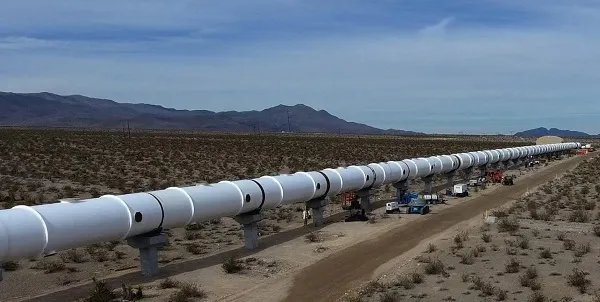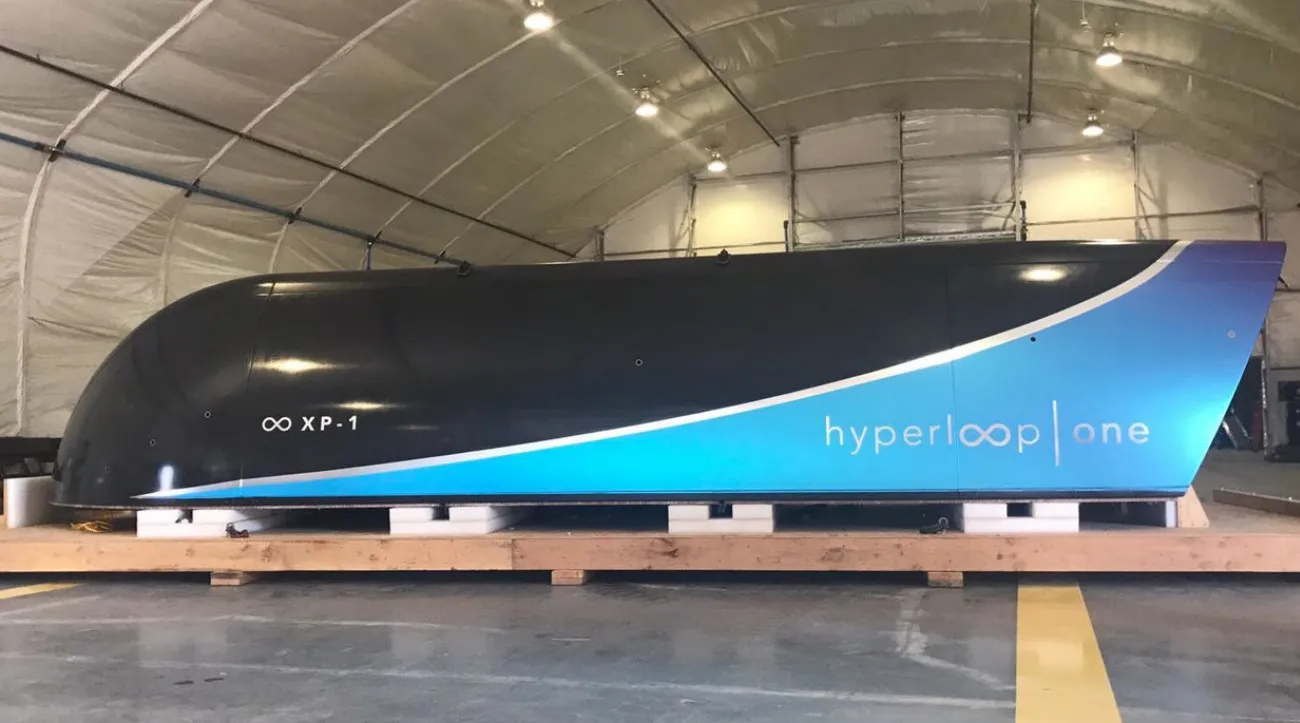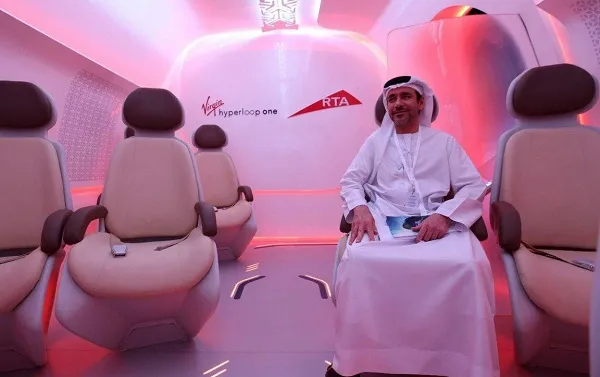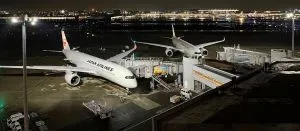
Hyperloop Transportation Technology Introduced:
Elon Musk, CEO of SpaceX and Tesla, first proposed the idea of Hyperloop transportation in a whitepaper he released in August 2013. In his proposal, Musk described a high-speed transportation system that has the potential to completely alter the long-distance travel industry. Elon Musk's "Hyperloop Alpha" whitepaper proposed a transportation system in which passenger pods would travel through low-pressure tubes at speeds greater than 700 mph (1126 km/h). The transportation and technology industries were buzzing with excitement over this radical concept. Several companies have stepped up to the challenge of developing and commercializing Hyperloop technology after reading Musk's whitepaper. The Hyperloop Transportation Technologies (HTT), Hyperloop One (now Virgin Hyperloop), and others started developing prototypes and conducting feasibility studies. Several Hyperloop firms have developed and field-tested prototypes over the years. The first full-scale test of a Hyperloop One propulsion system was completed in 2016. These results proved that the technology could actually work. Regulatory and safety hurdles have slowed the development of Hyperloop technology. It has been an ongoing process to resolve problems with passenger safety, tube construction, and land acquisition.
Concept and Key Principles of Hyperloop Transportation Technology:
Across the globe, governments and private investors are showing enthusiasm for the Hyperloop concept. The United States, India, and the United Arab Emirates are just a few of the countries that have investigated Hyperloop's potential as a mode of future transportation. The Hyperloop was still in the early stages of research and development. Despite the advances made, widespread commercial implementation has not yet been accomplished. It is still an exciting but ambitious concept in the transportation world, and its development and widespread adoption will depend on overcoming technical, regulatory, and financial hurdles. To reduce air resistance, hyperloop systems mimic conditions at high altitudes by using a low-pressure tube or network of tubes. Tubes are used for the conveyance of passenger pods or cargo capsules. These pods are aerodynamically crafted to transport people, goods, or both. Magnetic levitation (maglev) technology is used by Hyperloop pods to reduce friction and allow for high-velocity travel. The pods are levitated above the tube's surface due to the interaction of magnets on the pods and the tube's surface. The pods move forward with the help of linear electric motors. These motors, which are fitted inside the tube, accelerate and decelerate the vehicle as required. Because of the low pressure inside the tube, air resistance is greatly reduced, allowing the pods to travel at extremely high speeds while using very little power. Any air that seeps into the tube is constantly sucked out by vacuum pumps to keep the pressure at a safe, low level. The pods' velocity, location, and security are all controlled by cutting-edge computer systems. All possible emergencies have back-up plans in place.
The low-pressure tube is where the journey begins, and the pod is accelerated to high speeds by linear electric motors. The pod is kept levitating and traveling at high speeds with minimal resistance thanks to the maglev system. The low air pressure inside the tube means that the pod can keep moving at a steady speed while using very little power. Linear electric motors safely slow down the pod as it approaches its destination. The pod travels through the tube and stops at the appropriate station, where the passengers or cargo can get off.

Organizations conducting research on Hyperloop Transportation Technology:
One of the most well-known companies developing Hyperloop technology is Virgin Hyperloop (formerly Hyperloop One), which has the backing of Richard Branson's Virgin Group. They have done a lot of study, constructed some prototype systems, and tested the idea in different countries like the US and Saudi Arabia. HTT, or Hyperloop Transportation Technologies, is yet another formidable contender in the Hyperloop industry. They have put in a lot of time and effort into conducting feasibility studies and collaborating with different governments and organizations so that Hyperloop technology can be improved in new and exciting ways. Although Elon Musk's SpaceX isn't in the transportation business, the company did launch the Hyperloop Pod Competition in 2015. University teams were encouraged to enter the competition by having the opportunity to design and construct Hyperloop pods for use on SpaceX's test track. Innovation and new study were sparked by this occurrence. Tesla, also founded by Elon Musk, has provided discussions, proposals, and technical support for the Hyperloop concept, despite not being the company's primary focus. There has been international interest in Hyperloop technology from governments and transportation agencies. They have investigated the topic, made available land for testing, and investigated the necessary regulatory framework. Many academic and scientific institutions have contributed to the study of Hyperloop. They've done research on the technology and even entered the SpaceX Hyperloop Pod Competition. Many smaller companies and solo innovators have also been hard at work on Hyperloop-related projects, which has helped advance the field.

Future of Hyperloop Transportation Technology:
Developing fully functional and efficient Hyperloop systems will rely heavily on the ongoing improvement of materials, propulsion systems, and automation technologies. Obtaining the necessary safety certifications and understanding the intricate regulations of various countries will be a major challenge. It is crucial for organizations working on developing technology, governments, and regulatory agencies to work together. One major consideration will be the price tag associated with creating and deploying Hyperloop infrastructure. Hyperloop systems must be cost-competitive with existing transportation modes in order to be financially sustainable. As society places a greater emphasis on eco-friendly transportation solutions, Hyperloop's environmental sustainability, including its energy efficiency and carbon footprint, will be scrutinized closely. Hyperloop systems will need to be widely adopted once the public is convinced of their safety and reliability. There will be an effect on public opinion due to public outreach and education efforts. It will be a logistical challenge to connect Hyperloop networks to preexisting transportation hubs like airports and train stations. There are other high-speed transportation ideas in the works besides the Hyperloop. Maglev trains and the next generation of aviation could pose a threat to this industry. If Hyperloop systems are implemented successfully in one area, this could pave the way for their use in other places. Cooperation and standardized practices on a global scale will be crucial. The logistics and shipping industries could be completely upended by the efficiency and speed of Hyperloop systems. This facet of Hyperloop technology may experience rapid expansion in the near future. The technology and its potential applications will continue to develop as a result of ongoing research, innovation, and testing by both large and small companies.
The idea behind the Hyperloop is to create a mode of transportation for long-distance travel that is both extremely fast and energy-efficient. Prototype tests have shown promise, but there are still major technical, safety, and regulatory hurdles to clear before it can become a common mode of transportation. Although Hyperloop has made great strides in research and testing, widespread commercial implementation still faces significant technical, safety, and regulatory hurdles. Overcoming these obstacles and securing the necessary investments and approvals will be crucial to the success of Hyperloop transportation as a mainstream mode of travel.



